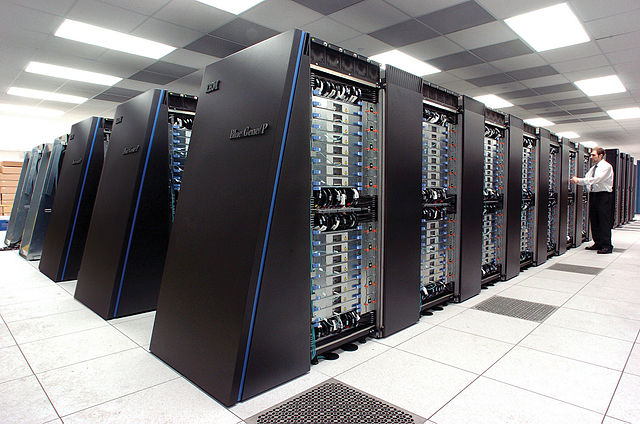Why Hadoop is Kind of a Big Deal
Hadoop Brings Big Data Capabilities to the Enterprise
Anonym
It would seem that the topic of Big Data is everywhere you turn these days. As with any major disruptive new technology, it didn't take long for the hype cycle's generative buzz to eclipse the actual initial adoption of tools brought to market by the Big Data vanguard. Perhaps nothing illustrates this better than the example of Hadoop. With more than half of the Fortune 50 and prominent social media names like Facebook already using it, Hadoop has made a splash big enough to send waves well beyond IT-centric media, even as a solid understanding of what Hadoop is has largely eluded many in the mainstream.

Blue Gene / P by Argonne National Laboratory is licensed under CCBY-SA 2.0
Chances are that by now that many people in your organization have heard about Hadoop. There is also an even higher probability that many of them aren't certain as to what Hadoop is exactly, or why it is so important. The siren song of extracting profit from the overwhelming information glut of today is alluring, but realizing this potential has been a daunting challenge for many enterprises. It can be a challenge even to explain the answers to two basic questions in straight-forward manner: What is Hadoop, and why does it matter?
The simplest response is that Hadoop is a software framework for Big Data, and Big Data is important. To further understand Hadoop, one should understand the basics of how it stores and processes data.

Hadoop logo Copyright © 2014 Apache Software Foundation is licensed under the Apache License, Version 2.0
The way Hadoop stores data files is key. Hadoop's file system is distributed across multiple computers. If a file gets stored in Hadoop, multiple copies are saved on different nodes, which is good because the file will still remain should any one of those given nodes fail for any reason. Furthermore, really large files can be stored in Hadoop; files with sizes much larger than could be fit on any single computer's disks.
The other side of the equation involves how Hadoop processes this distributed data. It dovetails well with the way Hadoop stores data, because a main principle embraced by Hadoop is something termed data locality. Traditionally, an enterprise will move data to the server that is intended to process it. While this seems logical, in fact moving data over a network can be a very time and resource intensive process, especially as the data increases in size. Anyone who has waited impatiently for a very large file to download to their computer before it opens can appreciate this fact. Hadoop embraces the principle that it is better to process data where it resides than to move it somewhere else for processing. Essentially, every node that stores data is a server capable of processing that data in place. All that need be sent to the node over the wire is the processing instructions themselves, which are small in size and won't congest and tie up the network.
The ability to distribute a large quantity of data over a multi-node network that can process it in place means that Hadoop has the capability to operate on an enormous amount of data in parallel. Hadoop excels at applying data-processing tasks that can be run independently on each constituent piece of a large data set, bringing the final results together as an integrated whole in the end.
That may not sound particularly impressive, or it may sound like a lot of trouble to go to or even an unnecessary over-complication, but it is everything. Hadoop is designed to distribute data and computational workloads across clusters of commodity hardware, offering linearly scalable computational power capable of handling massive amounts of data that is tolerant of (inevitable) hardware failures. In other words, exactly the way that more and more data will be processed as we proceed into the future.
And that is a very big deal.